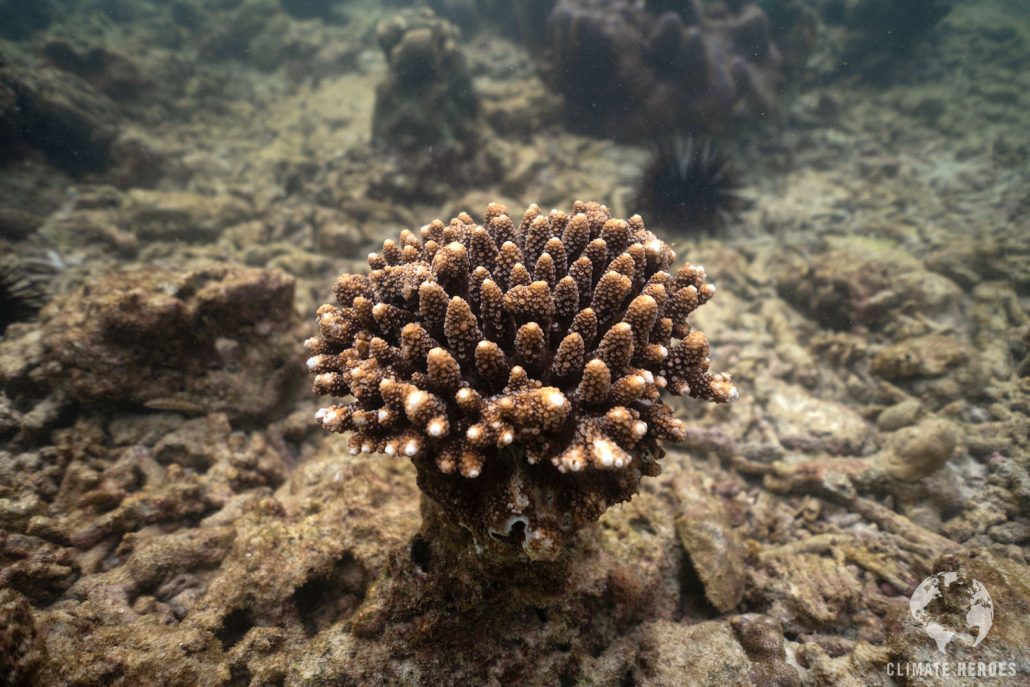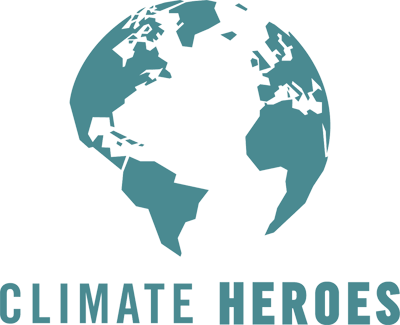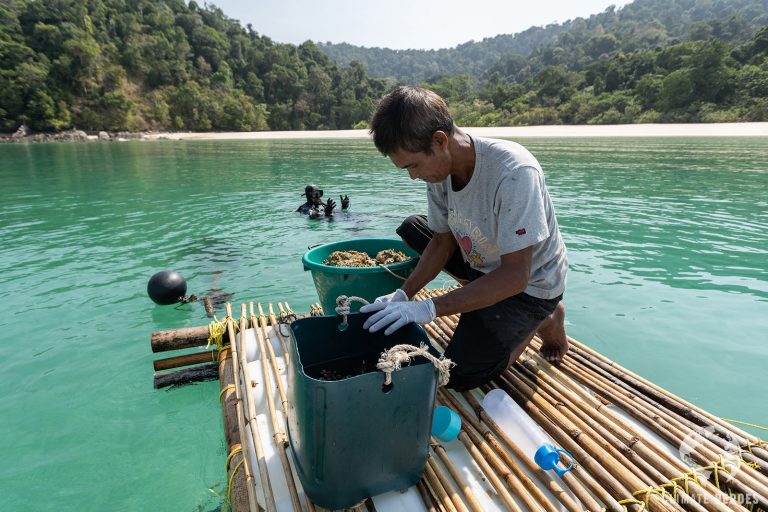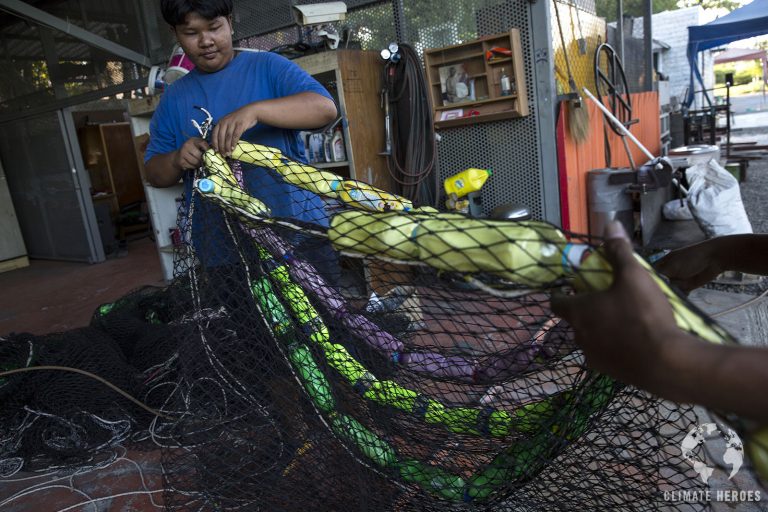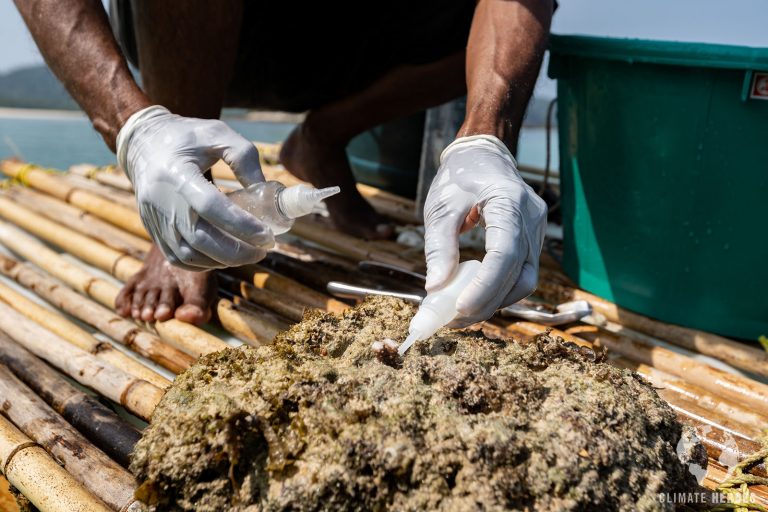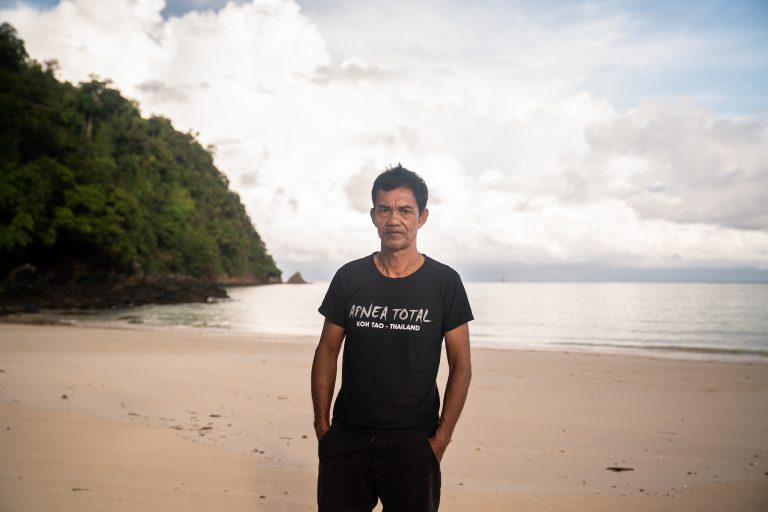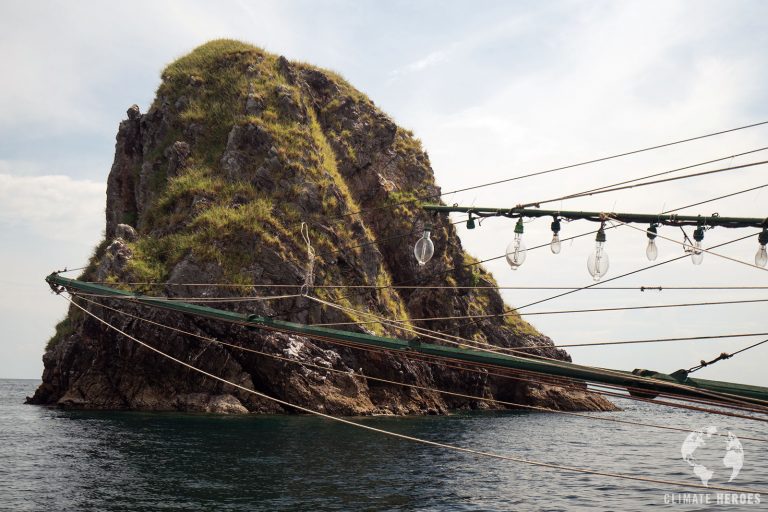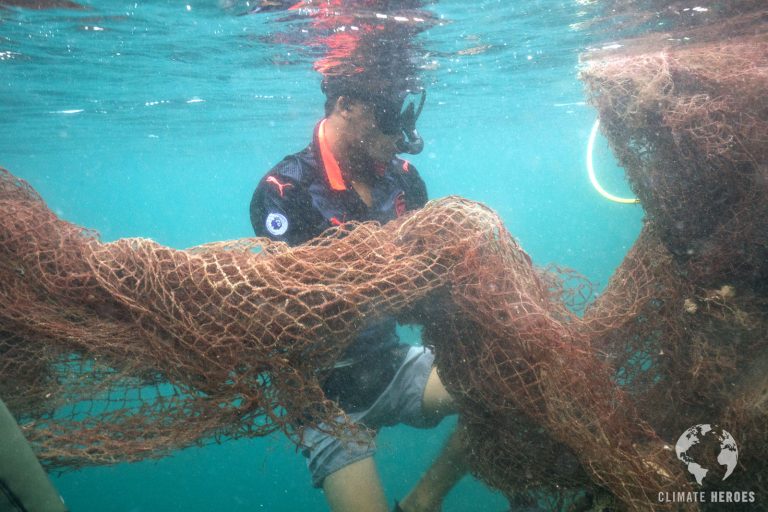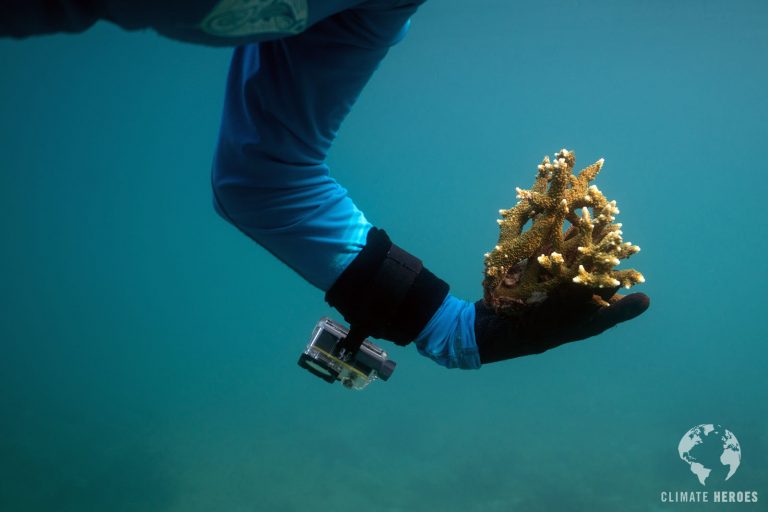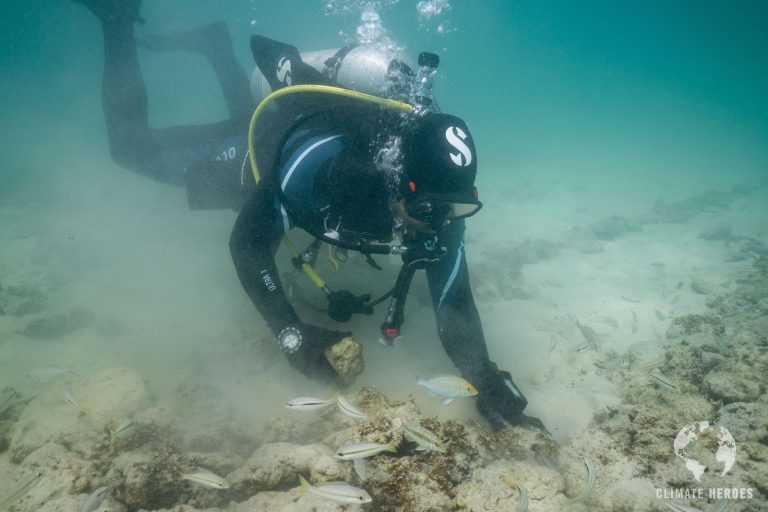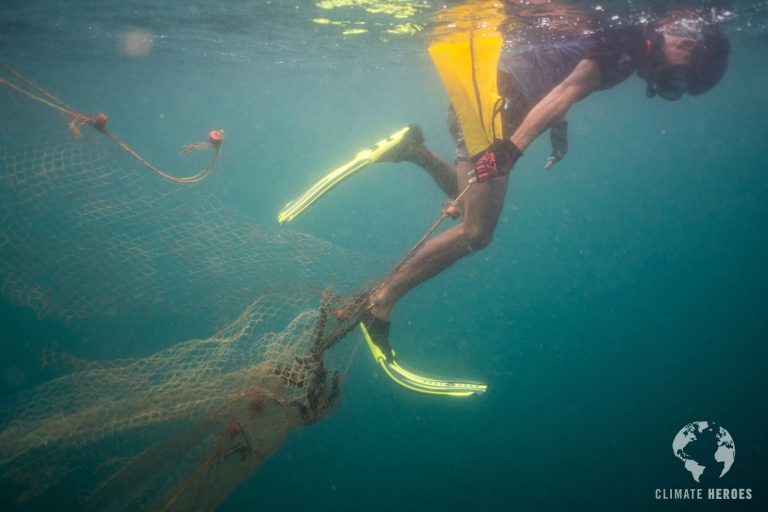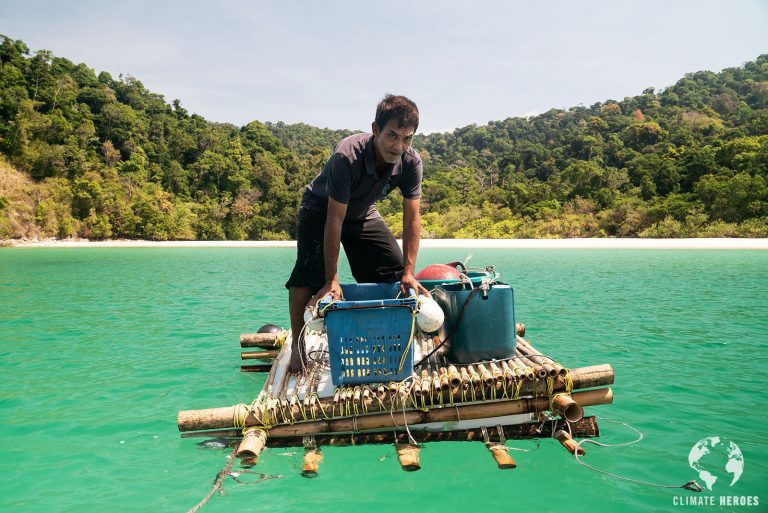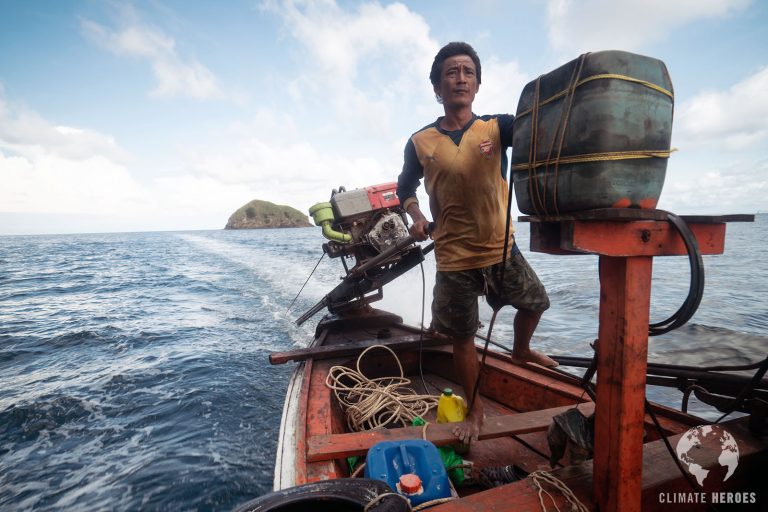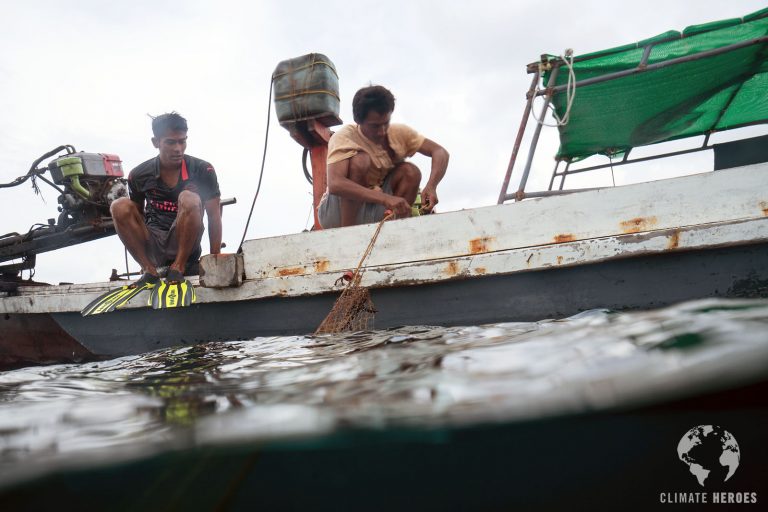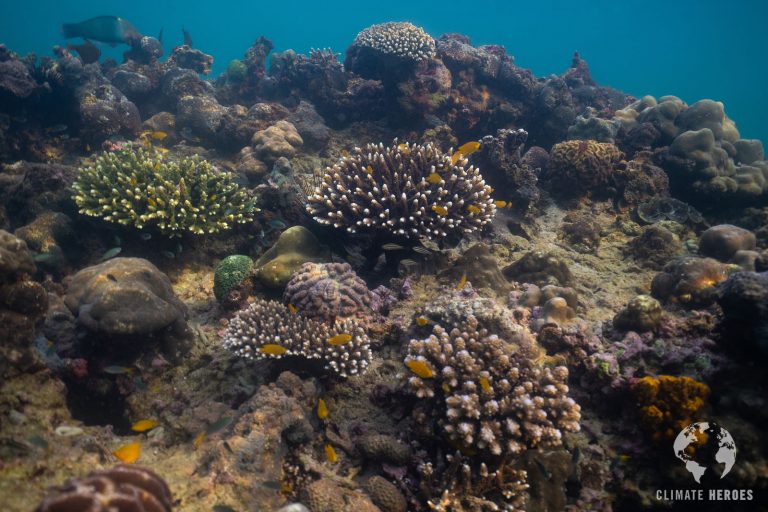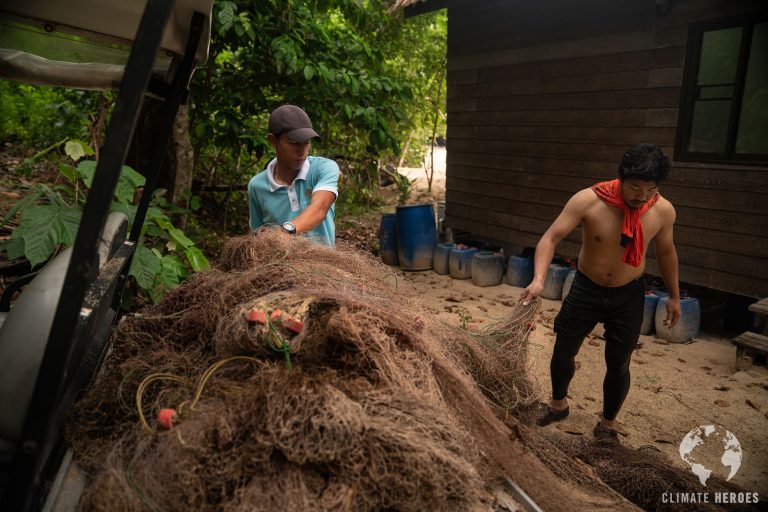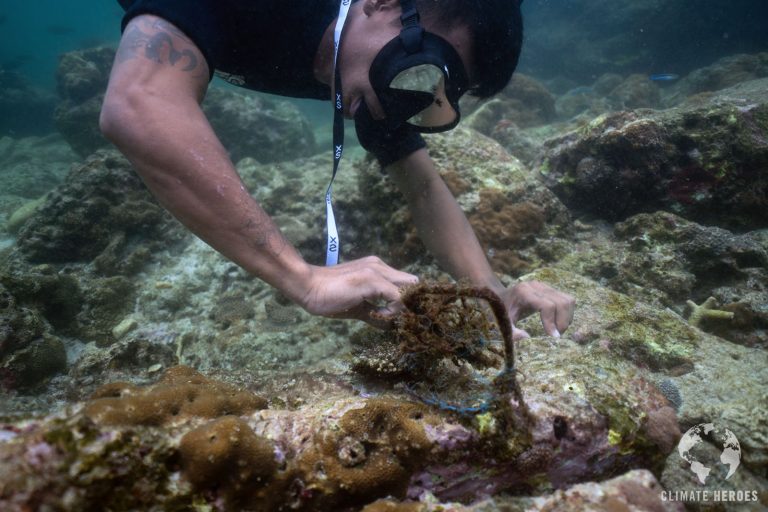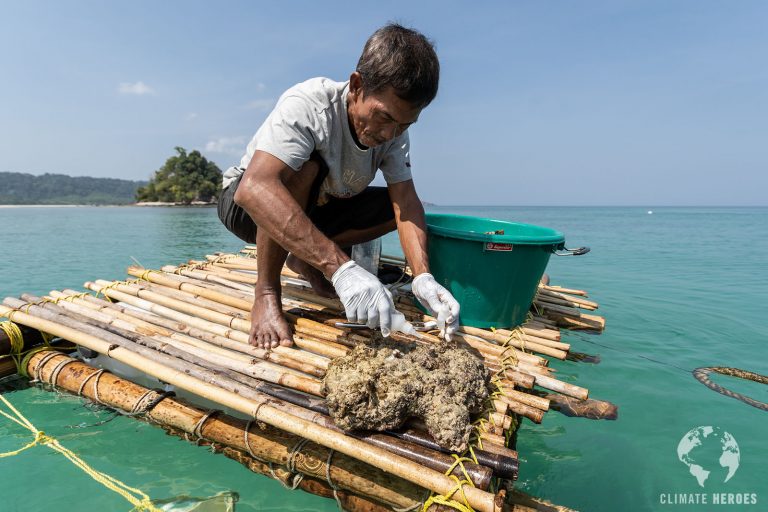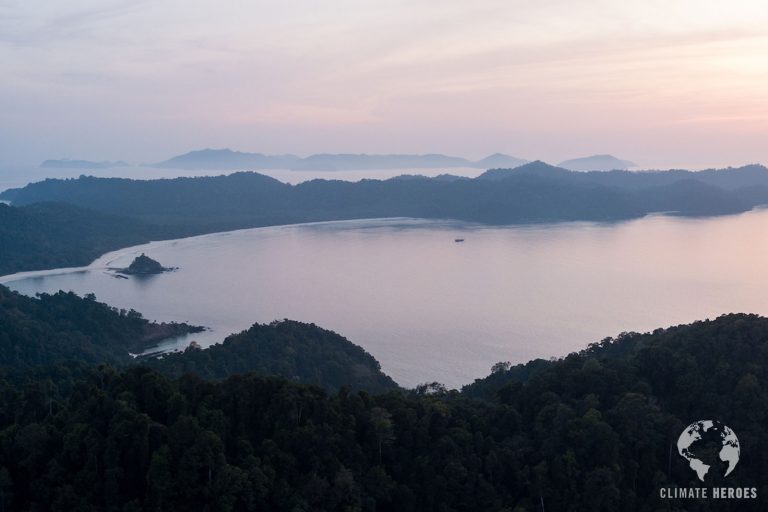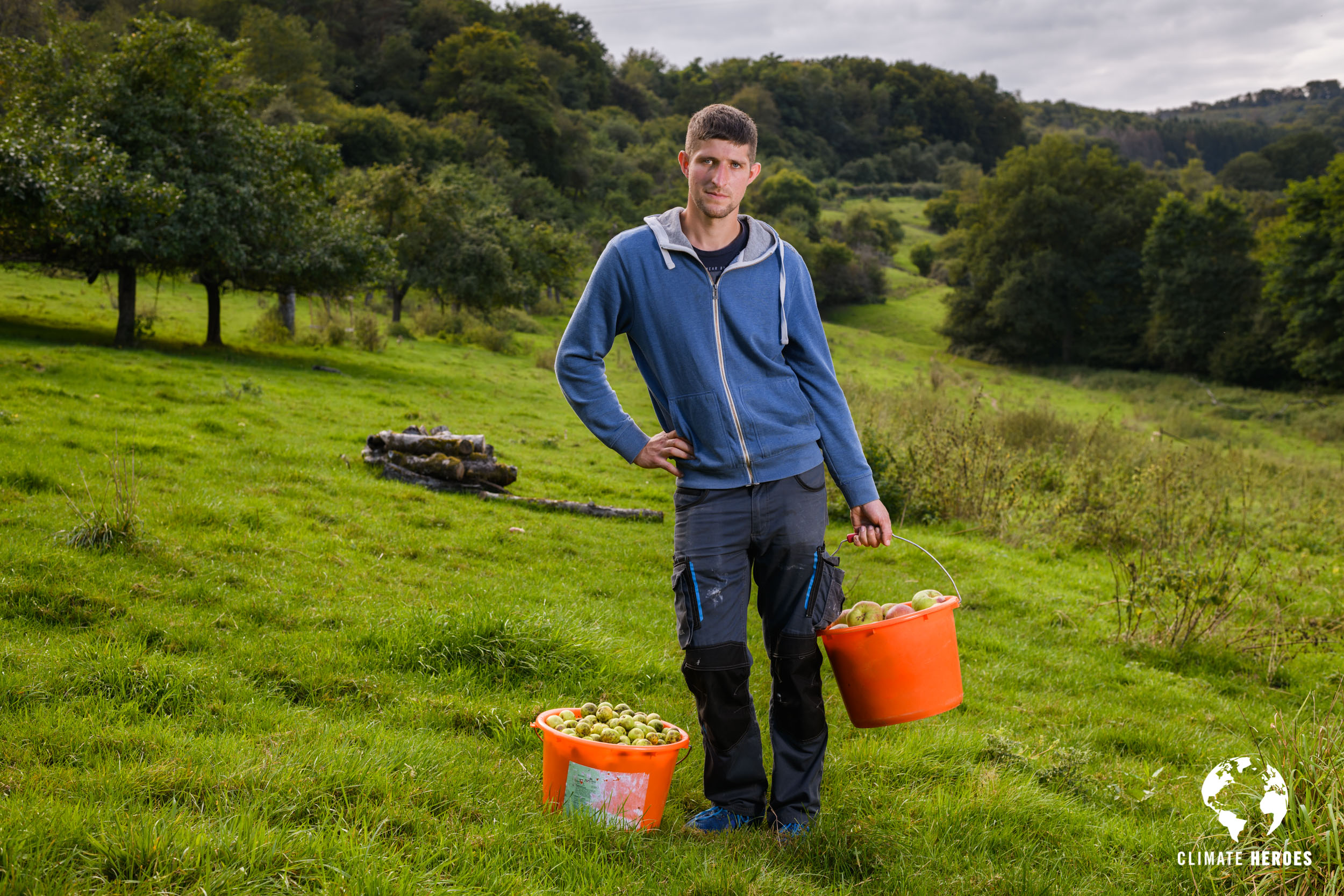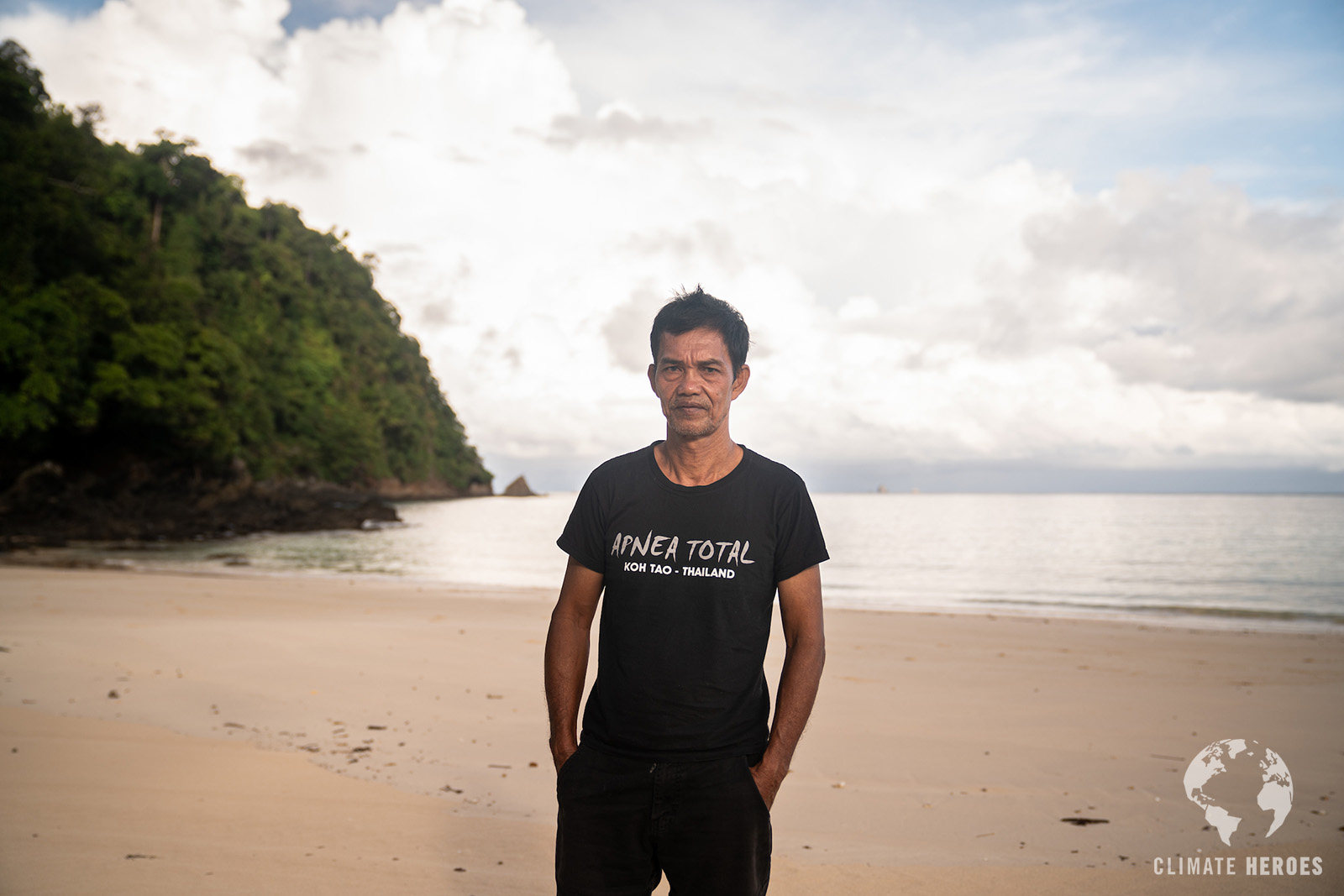Anuar Abdullah: Clearing Ghost Nets
How a Malaysian oceanographer is attempting to clear discarded fishing nets from the bottom of Asian seas.
Anuar Abdullah and his team arrive as the sun is setting in a small costal Burmese town, the closest connection to the island of Kyun Pila, some three hours away by long tail boat. Deep in the Mergui Archipelago, this remote island has remained relatively untouched. The archipelago itself is hard to access and tourist infrastructure is still limited to a few resorts dotted around the 36,000 km² of mostly uninhabited islands.
To reach the island you either need to take a speed boat from the border town of Kawthoung, or follow the route Anuar is taking through a village and across the waters. That evening, the calm ocean renders the crossing smooth. As the boat zooms towards the island, the horizon is peppered with boats as far as the eye can see. These are squid boats – sporting bright, green lights that lure the squid, allowing the fisherman to scoop them out of the water with their nets.
‘The reason the ghost net ends up in the reef is because they are deployed (…) too close to the reef most of the time,’ says Anuar ‘that’s the first mistake they do. Because near the reef is where the fish are.’
Anuar and his team are crossing to Kyun Pila for that very reason, to remove the ghost nets that have been entangling and suffocating nearby reefs. Currently, the main cause of concern to the archipelago is over fishing, dynamite fishing and plastic pollution, which destroy the reef. Ghost nets are global concern. According to animal rights watchdog World Animal Protection, approximately 640,000 tons of ghost nets are left behind in the world’s oceans each year, and around 136,000 whales, dolphins, seals and turtles are estimated to be caught in them.
Anuar begun working as an oceanographer, researcher and diver some 40 years ago. His passion grew from discovering the diversity of life under the water. Coral reef is nearly 100% fauna, and is the base of the food chain. ‘Small fishes feed on coral larvae and coral spawn, including big fishes like whale sharks.’ Anuar explains.
‘And then coral larvae are part of zoo plankton in the ocean. That gives food, if you cut them off, basically, you cut the base of the food chain off, the consequences are really serious.’
Back when Anuar was starting out in his research in this field, there was already talk of coral degradation, ‘We didn’t realise’ says Anuar ‘that this could go into the extent that we see now’. According to scientist we have lost between 25 to 40 percent of the world’s corals in recent decades due largely to seawater temperature rise and continued acidification of the ocean, but also tourism, fishing, dynamite fishing and plastic pollution. Australia’s Great Barrier Reef has been through three mass bleaching events in only five years, experiencing its most widespread bleaching event on record in early 2020.
Anuar works on the reefs all around Southeast Asia, the region with the highest level of biodiversity in the world’s marine ecosystems. As part of his current four-year project on Kyun Pila he has built dozens of coral nurseries and cleared nearly a ton of ghost nets from nearby reefs. His work is far from over though; six months into the project, which kicked off in mid 2019, a lot remains to be done. The volunteers that joined Anuar come from all over the world and their time commitments vary -some stay for a few weeks, others wish to see the project through to completion.
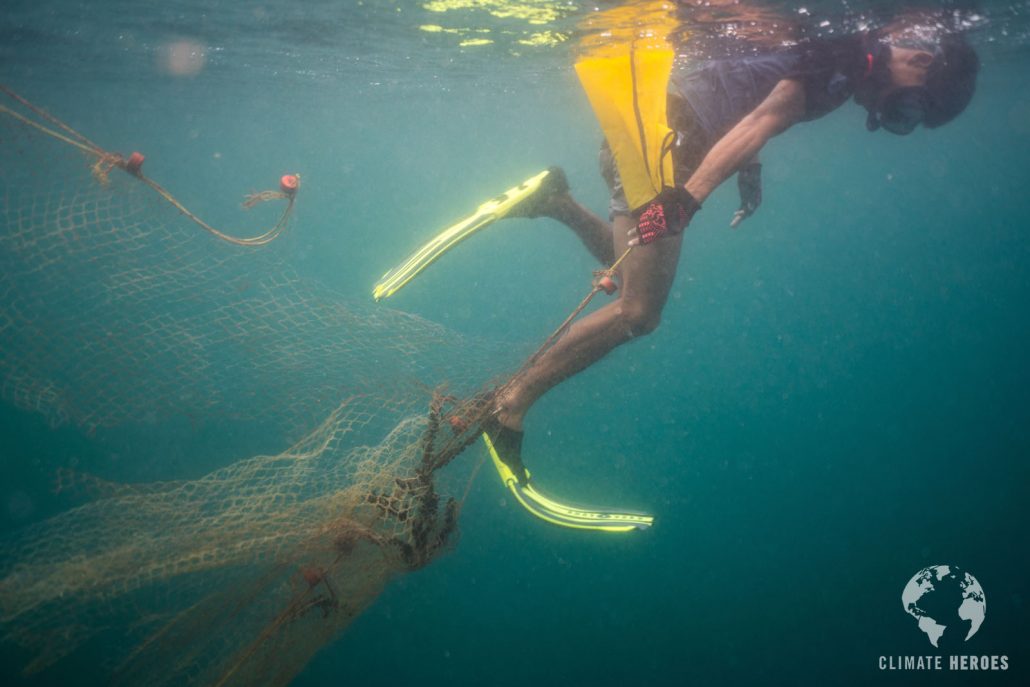
Clearing ghost nets and rehabilitating coral is no small feat. The work starts early on Kyun Pila as diving equipment, food, tents, and other essentials all need to be prepared and checked before heading out to any work site. All sites on and around the island are remote, with a more than 3-hour journey to the nearest hospital. All volunteers are dive masters, experienced in working underwater.
While ghost nets are relatively easy to clear, the work is tedious and extremely dangerous. Getting snagged in a net can be deadly. Coral propagation on the other hand is much safer but requires a sound knowledge of the reef and coral. Anuar, through his organisation Ocean Quest has trained hundreds of people in the art of propagating coral, by collecting coral that has been damaged on a nearby reef and a natural substrate of ocean rocks. Anuar then uses his signature concoction of minerals as a catalyst – which allows corals to regenerate rapidly – and a bonding agent to ensure that coral fragments don’t float away. The coral, now bonded to the substrate is placed in a nursery, where it can recover and begin growing within few months.
As Anuar explains ‘ The length of time that a reef takes to grow depends on its location. It depends on the water quality, and it depends on how much human interaction there is in that area’ but he continues ‘The length of time that’s generally needed to do coral reef rehabilitation is four years’ and within six years a reef can be fully recovered.’
While the Kyun Pila project is still ongoing, Anuar travels to Phi Phi island on a regular basis, where he has been working on rehabilitating Maya Bay – thrust into the spotlight in the Hollywood motion picture ‘The Beach’ staring Leonardo Dicaprio. The bay had since been decimated by tourists, who have been barred from visiting the area in 2018. His work over the last couple of years has been slowly paying off coral is starting to grow, and marine life is returning to the area, including large numbers of black tip reef sharks.
Though reefs remain under strain throughout the world, Anuar remains hopeful: ‘we still have pristine places on earth,’ he explains. ‘People should get involved with any kind of conservation. Not just the coral reef…if these places are damaged then we have nothing left’.
